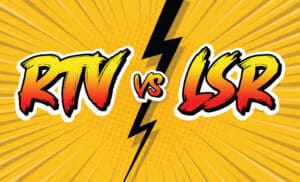It can be helpful to know about the materials and processes we use here at SiTech as you prepare for your journey with us. That’s why our SiTech Application Guide comes in so handy. We invite you to download it today so you can get started on your research.
Our Application Guide helps in the design and development of silicone keypads and related components. We love working with silicone for its versatility and the fact that it combines superior tactile response, reliability and long life – even in the most rugged environments.
Silicone keypads are used in many applications and industries, including medical, industrial, instrumentation, communications equipment, labs, military, automotive, aerospace, and point of sales.
In this guide, you will find information on the following topics:
- Liquid silicone rubber molding
- Tactile response and key types
- Design recommendations and rules
- Insert molding
- Secondary processes
- Keypad assembly
- Terminology
Let’s go over each of these components in a bit more depth.
Liquid Silicone Rubber (LSR)
Liquid silicone injection molding, or LIM, is a custom injection molding approach that uses liquid silicone rubber (LSR). Standard injection molding uses a High Consistency Rubber (HCR), AKA gum stock, but LIM uses a high-viscosity liquid silicone rubber comprised of two parts.
LSR is desirable because it cures at a faster rate than gum stock, leading to more affordable prices than traditional compression molding. This is the ideal choice for high volume production as well.
Tactile Response and Key Types
When designing a silicone rubber keypad, you have to think about how much force should be applied to the shorting pad. Metal domes happen to be the most common and accurate. It also means you don’t need a diaphragm.
There are many types of keys to choose from, such as pusher pad, flat, convex, concave and rocker, which handles a few commands within one key depending on where it is pushed.
Design Recommendations and Rules
The design of your keypad or component will depend on how the tooling will be made, along with how the tooling will affect production. We can advise you on the industry standards that can help with your design needs. You will also have to consider backlighting, shrink and tolerances.
Insert Molding
We can mold individual and conjoined silicone inserts into one final silicone-molded assembly, allowing us to craft custom backlit keypads and components. This process is known as insert molding, which helps us isolate a light source while preventing its spread to other areas of the keypad.
Secondary Processes
There are other things to consider, as well, such as:
- screen printing
- graphic design
- embossing and engraving
- die and laser cutting
- abrasion coating
- chemical coating
- conductive coating
- bonding coating
Keypad Assembly
Whether you need us to simply apply adhesive prior to shipment or you need a full
keypad, bezel, and PCB assembly, we can do it all for you. We can install printed circuit boards, membrane circuits, and metal or polyester domes on your custom keypads. We test all components to ensure functionality and performance, which minimizes sub-assembly time.
Terminology
Finally, in this guide, you will find a list of terms to get familiar with, such as actuation force, bezel, compression set, diaphragm, and tear strength.
Call us today or download your free application guide now!








